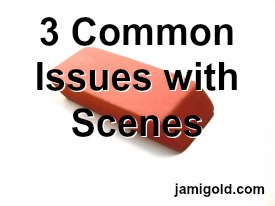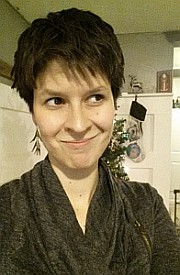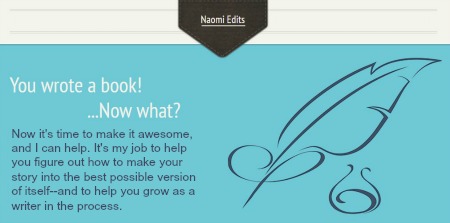Editing Tips: Top 3 Scene Issues — Guest: Naomi Hughes

Editor Naomi Hughes is here again this week with the second post in her series about the top issues she sees in story craft. If you missed my introduction before, I announced that she’s joining us for a series of posts, each focusing on a different stage of editing.
As I’ve mentioned before, the titles editors use to explain their skill set can be a bit imprecise, so we’re going to concentrate on the functions of each editing stage Naomi covers rather than the names. For example, in her previous post, Naomi focused on the revisions that address the big-picture of storytelling. That level of editing is often called developmental editing, but it can sometimes also be called content editing or structural editing.
Today she brings up another interesting aspect of big(ish)-picture revisions: scene edits.
We likely won’t find many editors calling themselves scene editors like we would with developmental editors doing developmental edits. Scene edits focus on making each scene as strong as it can be, and that’s not a usual pit-stop in the process of working with editors.
However, this function is important for us to cover at some time during revisions. Maybe we self-edit at the scene level, or maybe our developmental editor or line editor looks at each scene (some do and some don’t), but we want to make sure we’re checking that each scene adds to our story.
So let’s join Naomi as she shares the most common issues she sees at the scene level of editing. With her help, we’ll know what to look for, either for knowing how to fix those issues ourselves and/or for learning what questions to ask our editor(s) to make sure our work goes through this stage.
Please welcome Naomi Hughes! *smile*
*****
The 3 Most Common Scene Issues
Hi again! I’m Naomi Hughes, young adult writer, editor, and once again the commandeer-er of Jami Gold’s blog for the day (though I still haven’t found a decent tricorn hat). This is the second in a series of posts I’m doing about the most common problems I come across during each of the three main stages of editing—and how to fix them. Up today: scene editing!
What Is Scene Editing?
Scene editing is the second stage of revisions. At this point, you’ve got your big puzzle pieces in place—plot, goals, characters, and such—and now you’re ready to bring it all into sharp focus. While developmental edits are about finding the story you meant to tell, scene edits are about telling that story in the most effective way possible.
Your editor will go through your manuscript and ask things like:
- Is this scene extraneous?
- Is that subplot relevant?
- Where’s the most effective place to reveal this backstory?
When I’m doing scene edits, I tend to run into some of the same issues quite a bit. Here are the top three and what you can do to fix or, hopefully, even avoid them:
#1: Lack of a Scene-Level Conflict
Every single scene in your story should have at least one conflict—and ideally, you should try to weave in one or two more conflicts that pop up as well. Think of each scene as a sort of mini-story.
Your POV character comes to a scene with a goal (explicit or implied), is opposed (usually by another character with an opposing goal, but sometimes by nature or some sort of external situation), and voila! Scene-level conflict.
If a scene doesn’t have a small scale conflict, readers tend to get bored. I see this happen most frequently when a scene is framed around the delivery of information instead of prioritizing present-day-plot momentum.
A good example of this category would be classroom scenes where the teacher lectures on or requires students to answer questions about the ways in which their world differs from ours, for the purpose of giving the reader world-building information.
Fix-It Tip:
Ensure that the POV character has a goal in every scene and that the goal is opposed.
(Note from Jami: If you’re not sure how to handle goals in reaction scenes, check this post.)
#2: Ineffective Scene Intros and Outros
This one can be tough to master, and a lot of the time it’s an issue that will bleed through into the line editing as a result. But there is really only one basic rule here:
Keep the reader reading.
That’s it! Just keep us invested, keep us turning the page instead of getting up to make some coffee.
If your scene ends with all the characters happy and no urgent story questions hanging over their heads, it’s easy for us to put the book down. Same thing if we glance at the first line of the next scene to get a sneak peek and see nothing that snags our interest right away. All you have to do is keep that from happening.
Fix-It-Tips:
To go a bit more in-depth, here are some general guidelines:
- Intros must invite the reader into the scene and set the tone, which sets reader expectations. Bonus points if you can imply a mini story question, which automatically interests readers because we’re wired to seek closure and answers.
- Outros (the closing line of a scene or chapter) must propel the reader onward instead of giving us an easy spot to put the book down.
A note here: don’t feel like you have to end every scene with your character dangling off a mountainside to keep our attention. Ending every scene with a cliffhanger (literal or metaphorical) will quickly get just as boring as ending every scene with your characters blandly happy.
Instead, try giving us a hint of some plot-relevant action or decision that is about to be required of the character, or referencing some conflict brewing in the background, and then, yes, sometimes you can throw that Awesome Plot Twist at us right at the end of a chapter. As long as you keep the reader reading, you’re golden.
(Note from Jami: If you’re interested in more about “hooks,” check this post and this post.)
#3: Missing Motivations
Jami did a wonderful (and delightfully thorough!) post on missing motivations last week, so I highly suggest you check that out, but I wanted to include a quick note on it in my list as well because it’s such a common block to the forward momentum of a scene. When a character’s motivation isn’t immediately evident (or feels too flimsy), it jolts us out of the story and makes you as the author feel very present where you should be invisible.
Fix-It Tips:
Here are a few tips for this problem:
- First, make sure your characters are acting in-character.
If they’re a loyal, noble sort of person who then suddenly cheats on their spouse without any real reason (*coughcough* John Watson *coughcough*), we’re going to cry foul. Characters acting out of line with their prior characterization need to have a valid, personal reason for doing so—and ideally, it needs to be set up before they act out of character.
For example, if the Sherlock writers had shown that John maybe was getting antsy in his new role as a settled-down family man, and he still resented his wife a little bit for lying to him about her past for so long, we would’ve been able to more easily swallow his texting flirtations with a stranger on the bus. (I’m totally not bitter at all about that episode of Sherlock, by the way. Nope.)
- Second, make sure all characters have a motivation in every scene.
Yes, even that charitable hobo who shares a trashcan lid-umbrella with your hard-up hero for the night. Even if you don’t explicitly tell us the hobo’s motivations, we should be able to intuit from his actions and dialogue (and interiority, if we’re in his point of view) why exactly he’s moved to share his lid and what he hopes to get out of the deal.
Minor characters who help (or harm) the hero/heroine for no real reason, or for a cliché or stereotypical reason, are one of the most common kinds of missing motivations I come across as an editor.
That’s it for scene edits! Thanks for having me, and I hope you’ll swing by next week to check out my final installment about the mysterious, often-unheard-of craft of line editing.
*****
 Naomi Hughes is a freelance editor and an Assistant Editor at Entangled Publishing. She’s also a writer, and loves to hide sneaky fandom references (Doctor Who! Pacific Rim! Sherlock!) in her quirky young adult stories.
Naomi Hughes is a freelance editor and an Assistant Editor at Entangled Publishing. She’s also a writer, and loves to hide sneaky fandom references (Doctor Who! Pacific Rim! Sherlock!) in her quirky young adult stories.
She lives in the semi-rural Midwest with her husband, the most adorable preschooler on the planet, and several pets who are all named after characters from Avatar: The Last Airbender.
You can follow Naomi on Twitter at @NaomiLHughes, where she frequently hosts giveaways and chats about publishing advice, and find her at her website, where she offers editing help for everything from queries and synopses to submission packages and full manuscripts.
(*psst* Note from Jami: Naomi also shares a fantastic Revision/Plotting Checklist on her site.)
*****
Thank you, Naomi! I had never heard of scene edits being separated out like this, but you’re absolutely right about the importance of this stage (no matter what we call it) because checking the strength of our scenes really is a different aspect from checking our overall story.
As a reader, I know my first Did Not Finish book was due to the main character acting out of character. (A married character suddenly wasn’t married when a tempting love interest came along???) *ahem* That book-throwing incident occurred when I was a teen, and I still remember it in perfect detail. So it obviously made a big impression on me, and I can completely relate to Naomi’s bitterness. *grin*
As a freelance developmental editor, I found myself doing a *head slap* over Naomi’s emphasis on pulling out this stage of editing from the rest. Although I look at each scene separately, we can’t assume that every editor who calls themselves a developmental editor would do the same, so it’s critical to make sure that this stage is covered somewhere in our editing process, either by self-editing or by our developmental editor or line editor (or whatever they choose to call themselves).
Hopefully, these tips for what to watch out for—and how to fix those issues—will help ensure that our scenes act as mini-stories to keep our readers’ interest. An unnecessary scene can bring down the pacing of our story (and lower the story tension), so it’s important to strengthen our story scene by scene. *smile*
P.S. Don’t miss the rest of Naomi’s series, covering developmental edits and line edits.
Have you ever heard of scene edits before? As a reader, have you noticed problems with stories at the scene level? Which issues mentioned above have you seen in others stories or in your own? Do you have any tips to add for how to find or fix these issues? Do you have any questions for Naomi?
Pin It

Handy tip: any wide-brimmed hat can be converted to a tricorn with the addition of three well-placed brooches or pins!
Thanks for this post – it’s incredibly timely as I finished the second draft/structural rewrite yesterday and am starting in on the smaller-scale edits today. (And I have no idea what I’m doing – first time round on full-length novel.)
Great post that I will share with my clients!
(Loved the Sherlock bit. My husband was rolling his eyes at me as I went on and on about that being out of character for Watson. Glad I wasn’t the only one.)
SO TOTALLY bitter about that episode. Seriously, Sherlock-writers? Seriously?
lol
bookmarking this for a later round of self-edits, once the current draft is done!
I don’t agree with every scene needing conflict. That would be a strife-torn book. What about romance? The happy ending scene? Scenes where a character needs to do research, say in a library or press cuttings book, and finds a clue or family tree.
I do agree with every minor character having a motivation. Goodness is allowable.
Hi Clare! I agree that having a big external conflict in every scene would get repetitive and feel gimmicky. But there are many other types of conflict that can be showcased in different scenes (romantic, internal, interpersonal), and I would say that most scenes needs to include at least one of them. Conflict is, in most cases,what keeps readers reading–whatever form it might take.
And I just finished this weekend of going through my entire manuscript, scene by scene, checking motivation, conflict, etc. Wish I’d read this before I’d done that! Lol. BUT it’s still very helpful, because I need to go back through my notes and start actually editing the MS. So I’ll be applying the great advice here. Thanks!
[…] Editing Tips: Top 3 Scene Issues — Guest: Naomi Hughes | Jami Gold, Paranormal Author […]
[…] drafting comes revision and editing. Naomi Hughes reveals the top 3 scene issues she encounters, and Kristen Lamb has 6 easy ways to clean up your own […]
[…] second post focused on the revisions that strengthen scenes. We’ll usually have to ask the right questions of our developmental or line editor to make […]
[…] develop effective scene beginnings and endings (starting and ending at right point) […]
[…] Don’t miss the rest of Naomi’s series, covering scene editing and line […]